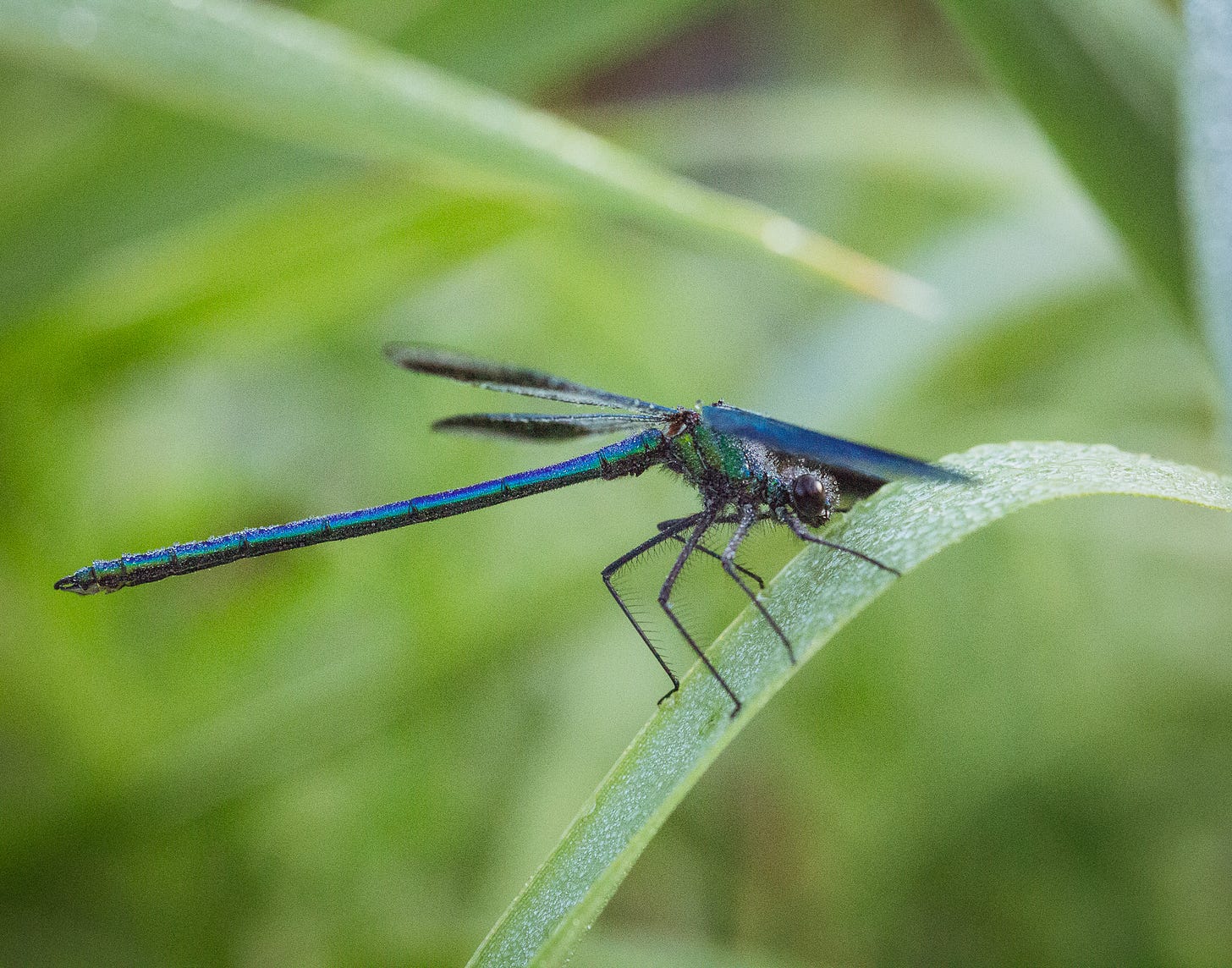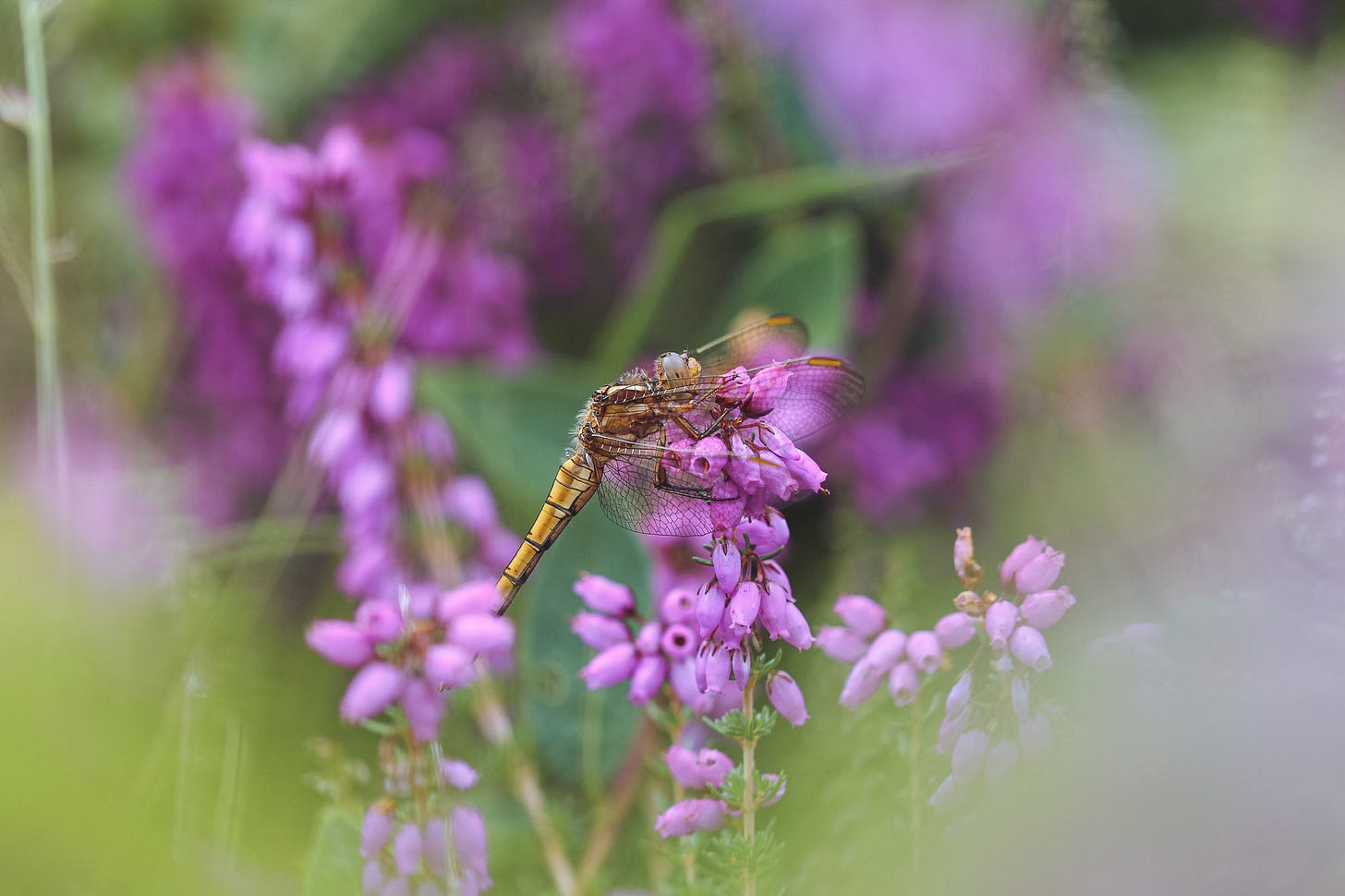Hello and welcome to a special dragonfly edition of Shutter Squirrel! To mark the official dragonfly week here in the UK (from July 5th to the 13th), this special edition newsletter has some great tips and advice for photographing these beautiful insects. From finding and locating, to getting close and snapping that shot! Read on to find out how you can get going with dragonfly photography!
Photographing dragonflies can be really rewarding and give you some great shots, however it can also be an absolute pain in the arse. Dragonflies are notoriously quick, rarely settle and even then it’s often in the middle of the pond on a murky stick which you can’t for the life of you crop out of the photo. All is not lost however, because after 4 years of photographing dragonflies I have managed to come across several tips and tricks that make the process a whole lot more rewarding and result in some beautiful shots.
Firstly, let’s clear up what actually is a dragonfly because there is also a very similar (but WAY easier) species known as damselflies you can also photograph. Most people are familiar with dragonflies and typically they are the stockier, more robust looking insects you spot whizzing around ponds and canals. Whereas, damselflies are more delicate, often smaller and tend to stick to the edges of ponds fluttering about. Damselflies almost always land with their wings closed and their eyes resemble dumbbells; whereas dragonfly eyes touch in the middle. Now the key takeaway here is that damselflies are much easier to photograph because they don't move as far away or as fast as dragonflies; this makes them a great stepping stone towards dragonfly photography, if you are just getting started.
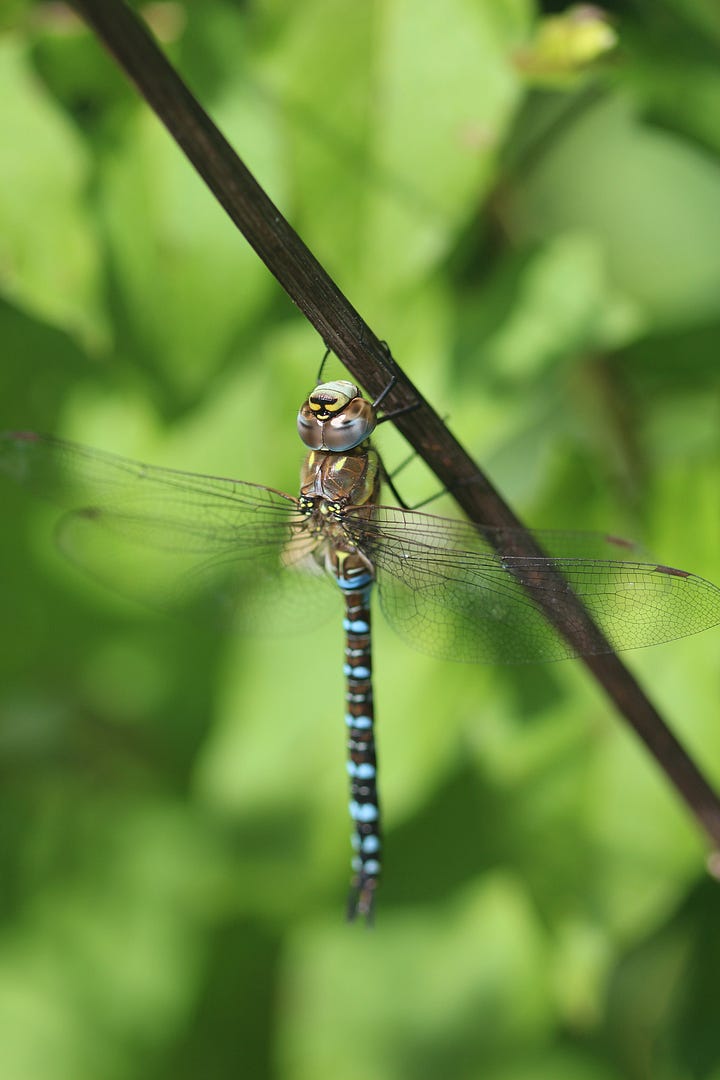
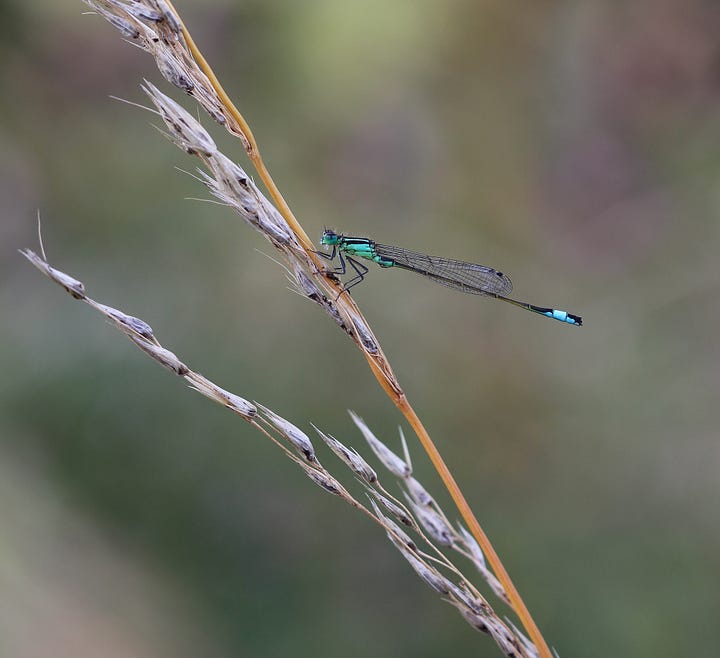
Now, we can identify the different species let’s get into the photography tips:
Go out early- and by early I mean pre-breakfast ‘it's 6am and you are standing in your pond wearing wellies early’. Dragonflies and damselflies can be found resting on reeds, branches and in trees at this time and because it’s summer the early morning light provides the perfect lighting for shots. This is perfect for taking resting shots of dragonflies where at other times you would not be able to get that close.
The approach- So, it’s no longer early in the morning but you still want to go out and take some shots; the answer to getting close to dragonflies now is all in your approach. Let’s say you spot a dragonfly perching a metre or so in front of you. You want to get your camera ready now, check the settings and have your hand on the shutter button. Move slowly, no sudden movements, no jerking your head or rustling your backpack. Take a shot as you approach, it may not be brilliant but one photo is better than none. Then slightly skirt around the dragonfly, not getting too close until you know exactly the angle you want. Finally, go in for the shot! If the dragonfly flies away before this stage it just wasn't meant to be and you are just going to have to keep searching for another opportunity, but I’ve used this method countless times and it does pay out in the end.
The location- Most people, when thinking about how to find dragonflies head for water as this is the most obvious choice. However, it is not necessarily the best choice because what a lot of people don't realise is that dragonflies once they emerge from the water only really return for breeding and a lot of varieties tend instead to fly away to hunt and search for food. So, if you are lucky enough to visit a nature reserve or an area that has a water source such as a pond or canal but also has areas of grass or heathland then walking away from the water may be your best option.
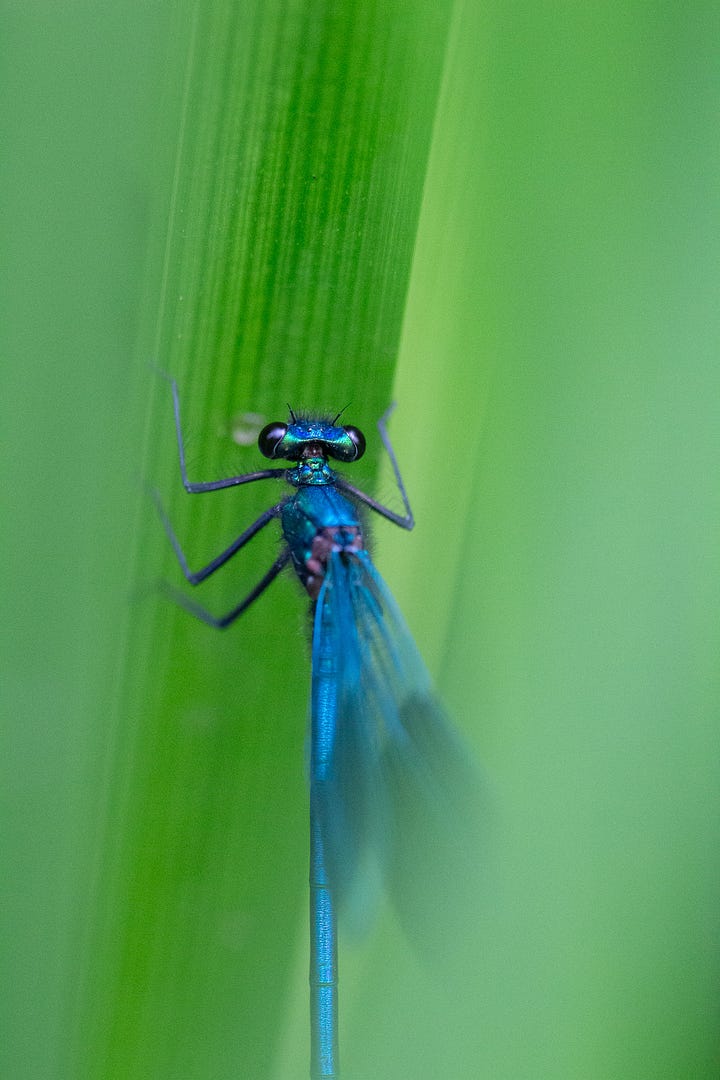
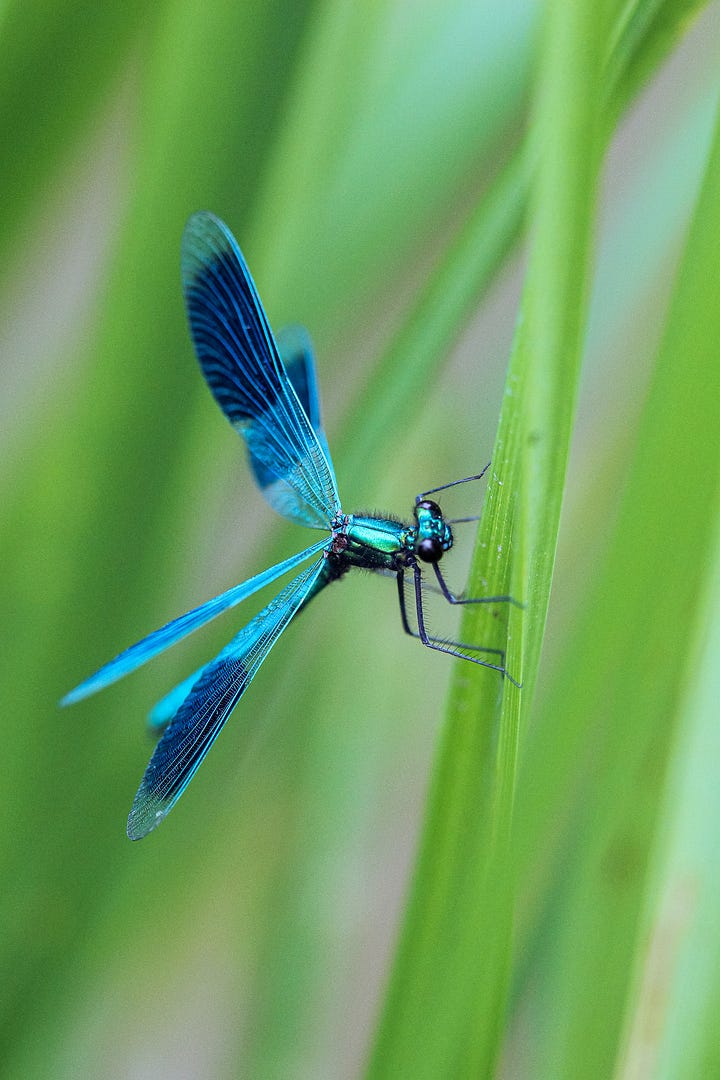
Gear Spotlight: Dragonfly special
Gear spotlight is the section of the newsletter where I explore and review some of my favourite wildlife photography gear. However, there is a little bit of a twist to it, not all the gear I will be discussing is camera equipment… I’m no tech expert and am in no place to compare that sort of thing. However, I think camera equipment is only the tip of the iceberg for gear and it’s all the other stuff you carry along the way that can make a difference.
Okay, so I thought about it and tried to come up with some dragonfly specific gear however, there simply isn’t any I could think of to review this week. So instead I thought it would be fun to highlight a couple of my favourite dragonfly-themed items:
Britain’s Dragonflies - A field guide
As far as ID charts and guide books go for dragonflies this is by far my favourite! It includes just about everything there is to know about the damselflies and dragonflies of Britain and Ireland as well as real photos, maps and identification details. You can find it in the NHBS shop or other bookshops.
Dragonfly pin badges
So, confession time ever I am a complete sucker for wildlife pin badges… they are just so cute! My favourite dragonfly pin badges are from the British Dragonfly Society shop which offers a great little selection!
Dragonfly Prints and Photos
I don’t know if self-promotion in my own newsletter for my own wildlife photograph prints is a good idea… BUT they are really cool (if I do say so) and make cute gifts or wall decorations :) You can find my shop here!
A tip from the field:
It can be tempting to start snapping away as soon as you see your target but before you go crazy, take a second to pause and see if you are in the right place, have the right angle or are framing your subject how you actually want- there will always be more opportunities out there so don’t rush because one great image is better than ten mediocre ones.
Community Challenge #4
This week as the newsletter is all about dragonflies, I want to see your best shot! Share it with me, Join the Shutter Squirrel Chat channel, or with the hashtag #shuttersquirrel
